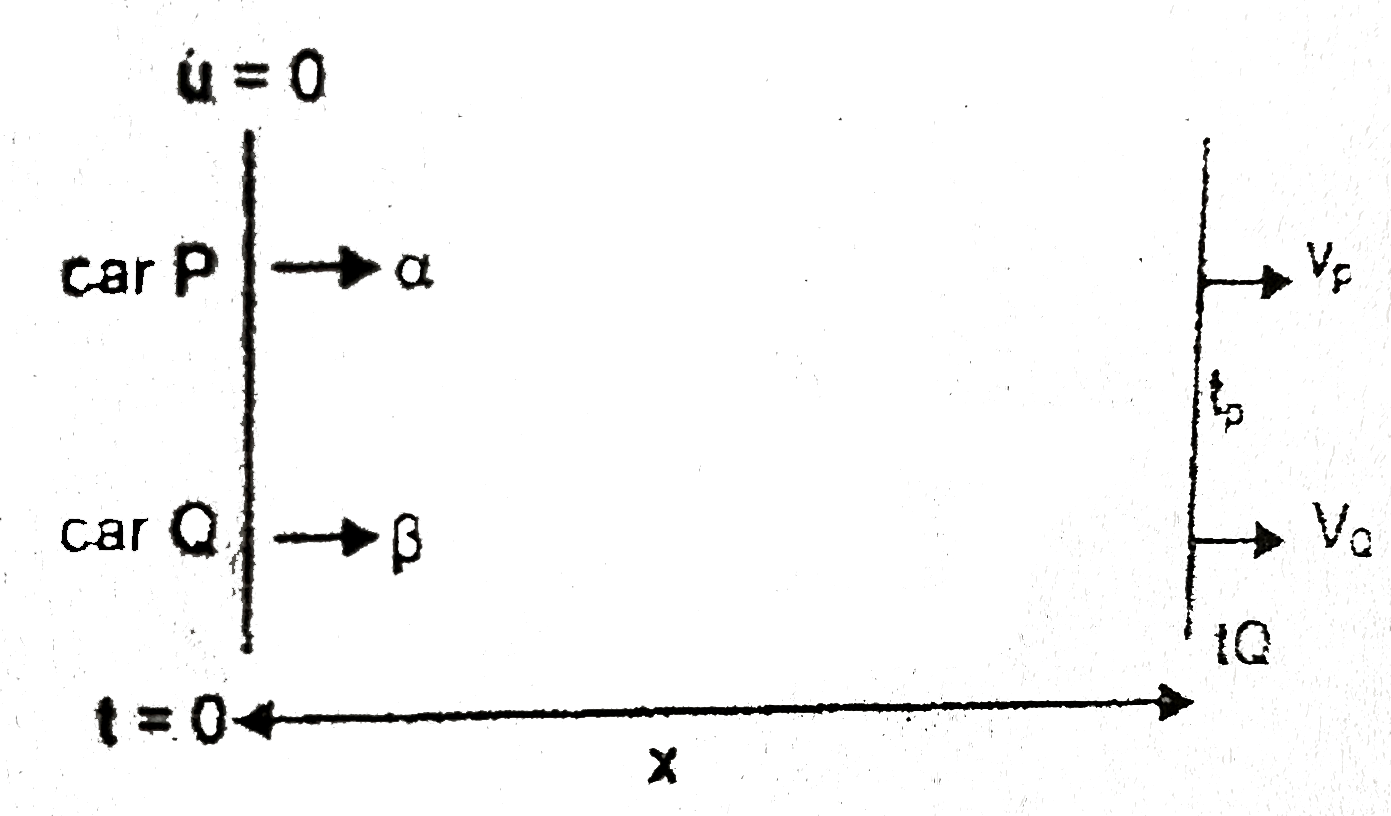In a car race, car A takes a time t less than car B at the finish and passes the finishing point with speed v more than that of the car B. Assuming that both the cars start from rest and travel with constant acceleration a1anda2 respectively. Show that v=√a1a2t.
v0=√α2−β22t0
v0=(α+β2)t0
v0=√αβt0
v0=√α2+β22t0
The correct Answer is:C
In a car race ……….

P.given tQ−tp=t0−0Vp−VQ=V0 ………(2)
x=0×tp+12αt2p⇒tp=√2xα
v2p=02+2αx⇒Vp=√2αx
Q.x=0×tQ+12βt2Q
tQ=√2xβ
now Vp−VQtQ−tp=v0t0⇒√2αx−√2βx√2xβ−√2xα=v0t0
⇒v0=√αβnt0
Topper's Solved these Questions
- TEST PAPERSBOOK - RESONANCE ENGLISHCHAPTER - TEST PAPERSEXERCISE - PART - II PHYSICS
106 Videos
- SIMPLE HARMONIC MOTION BOOK - RESONANCE ENGLISHCHAPTER - SIMPLE HARMONIC MOTION EXERCISE - Advanced Level Problems
13 Videos
- TEST SERIESBOOK - RESONANCE ENGLISHCHAPTER - TEST SERIESEXERCISE - PHYSICS
130 Videos
Similar Questions
In a car race, car A takes time t less than car B and passes the finishing point with a velocity v more than the velocity with which car B passes the point. Assuming that the cars start from rest and travel with constant accelerations a1 and a2 show that vt=√a1a2 .
View SolutionIn a car race, car A takes 4s less than can B at the finish and passes the finishing point with a velcity v more than the car B . Assumung that the cars start form restand travel with constant accleration a1=4ms−2 and a2=1ms−2 respectively, find the velocity of v in m s−1.
View SolutionIn a car race car A takes t0 time less to finish than car B and pases the finishing point with a velocity v0 more than car B. The cars start from rest and travel with constant accelerations a1 and a2 . Then the ratio v0t0 is equal to
View SolutionIn a car race, car A takes time t less than car B and passes the finishing point with a velocity of 12m/s more than the velocity with which car B passes the finishing point. Assume that the cars A and B start from rest and travel with constant acceleration of 9m/s2and 4m/s2 , respectively. If vA and vB be the velocities of cars A and B, respectively, then
View SolutionStarting from rest a particle is first accelerated for time t1 with constant acceleration a1 and then stops in time t2 with constant retardation a2. Let v1 be the average velocity in this case and s1 the total displacement. In the second case it is accelerating for the same time t1 with constant acceleration 2a1 and come to rest with constant retardation a2 in time t3. If v2 is the average velocity in this case and s2 the total displacement, then
View SolutionStarting from rest a particle is first accelerated for time t1 with constant acceleration a1 and then stops in time t2 with constant retardation a2. Let v1 be the average velocity in this case and s1 the total displacement. In the second case it is accelerating for the same time t1 with constant acceleration 2a1 and come to rest with constant retardation a2 in time t3. If v2 is the average velocity in this case and s2 the total displacement, then
View SolutionA particle starts with an initial velocity and passes successively over the two halves of a given distance with constant accelerations a1anda2 respectively. Show that the final velocity is the same as if the whole distance is covered with a uniform acceleration a1+a22.
View SolutionA car, starating from rest, accelerates at the rate f through a distance S, then continoues at constant speed for time t and then decelerates as the rate f/2 to come to rest. If the total distance travelled is 15 S, then
View SolutionA car, starting from rest, accelerates at the rate f through a distance s, then continues at constant speed for time t and then decelerates at the rate f/ 2 to come to rest. If the total distance travelled is 15 s, then
View SolutionEngine of a car supplies constant power to the car which accelerates from rest. Car moves along a straight road. If velocity and displacement of car at any time t be v and s respectively then
View Solution